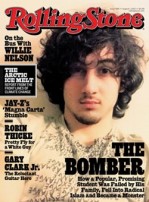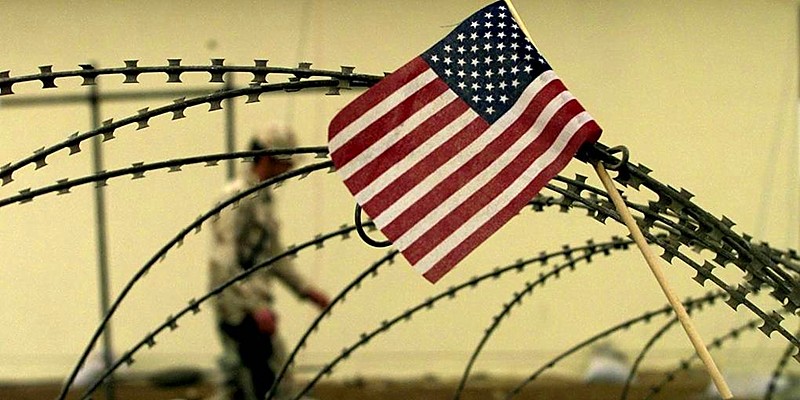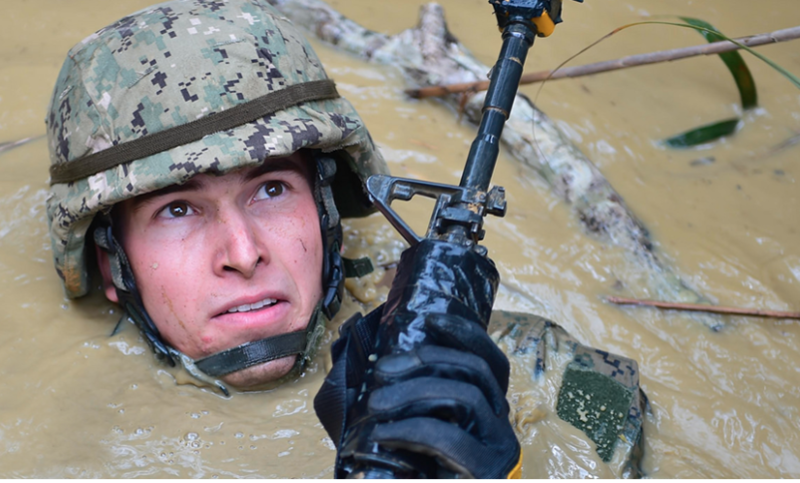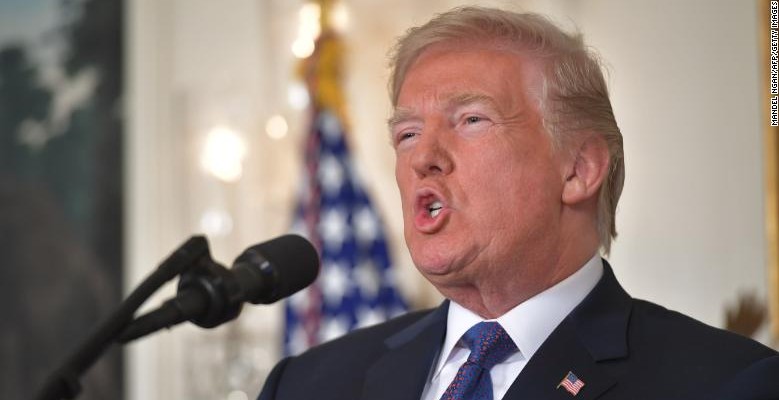“Why?”
It is the most important question a journalist can ask.
The “who, what, when and where” set the stage, but any actor will tell you that the motivation—the “why”—is what truly brings a character to life and makes them comprehensible. The motivation is, in fact, the whole point of the story.
In the case of the Boston Bombing, the editors at Rolling Stone have asked “why” and set off a fascinating and all-too telling response.
The visceral reaction to the much-discussed and widely-criticized cover featuring the visage of Dzhokhar Tsarnaev strikes right at the heart of a largely unanswered question central to the War on Terror.
Why?
Why did they attack us?
Why do they hate us?
Why are they threatened by our freedom?
Since 9/11 brought terrorism into the lives and living rooms of each and every American, the foggy War on Terror has both transformed America and engulfed the world without much in the way of adequate answers to these questions. The randomness and insanity of “Evil” is the lone explanation that fills the void of cognitive dissonance between the causes and effects, and between the truth and its consequences.
Evil works best where understanding is elusive. It flourishes where ignorance persists—particularly willful ignorance. So many atrocities have at their root the willingness of “bystanders” to look the other way. But it also offers a tempting salve when “evil acts” hint at something deeper and more complicated than random insanity. That is when we grasp in the dark for answers. In lieu of easy answers we struggle to wrest some logic out of the rubble and collateral damage.
Logical explanations, however, rely on information and context. Sadly, these have been in short supply since George W. Bush first began chanting the word “Evildoers” and, therefore, provided a reassuring national mantra to a shocked and awestruck population.
The culprit was, quite simply, Evil. And the ready-made juxtaposition of Evil is, of course, Good.
Obviously, America is Good, particularly if Evil seeks to destroy it. Is there any doubt that a war against Evil is fully justified? A “Just War” is not just war. It is the God-given right of the afflicted.
This easy and simple juxtaposition of Evil versus Good worked quite well on a woozy population stumbling out of a decade bookended by OJ and Monica. Mired in infotainment and woefully unaware of the complicated genesis of Islamic fundamentalism, the “face of evil” fit quite well on Osama bin Laden. His long beard and swarthy skin and anachronistic robes evoked a deeply-seated meme consecrated by the Ayatollah Khomeini and his revolution against America’s Shah.
Without shame or a sense of irony, America’s pain was quickly leveraged into another long-standing meme—the dark military dictator. Any casting call for the usual suspects must include the sneering face and military bravado of Saddam Hussein. Like Osama, he worked for America before he worked against it. When America set the stage for its terrifying war on a nation of truly innocent bystanders, his face matched the poorly scripted sequel to the Gulf War. Mainstream journalism remained fixated on the easy narrative, happily spinning on the Axis of Evil and failing so utterly and completely that 70% of Americans believed Saddam Hussein was responsible for 9/11.
His face fit the narrative. Unlike the face of Dzhokhar Tsarnaev.
“Jahar,” as his friends and wrestling coach liked to call him, presents something altogether different. The juxtaposition of his soft, inviting face next to the big, bold tagline “The Bomber” immediately sparked outrage. The utter lack of evil present in his doe-like eyes and the suspicious lack of horns protruding from his full head of dark, curly hair did not properly match the narrative driving the War on Terror.
This wasn’t Osama or Saddam or even Mohammed Atta. This wasn’t a mugshot or a still taken from a grainy jihadist video. This was a national Rorschach Test.
Although this very picture was used by the NY Times shortly after the attack, and despite the fact that this type of juxtaposition is a fairly standard way to examine the often stark and chilling gap between appearances and reality, many cried foul and some retailers even boycotted the magazine.
Yet, it is that gap between appearances and reality where one might actually find answers to the “whys.” But the War on Terror cannot sustain these gaps. Appearances and reality must match. The dozens upon dozens of children killed in drones strikes must not be seen or named. The hundreds of others killed must be categorized as “militants,” if only because they happened to be “military-aged” males. And the “double-tap” strikes cannot be said to have killed our latest genus of citizen-saint—the “first responder”—despite the fact that American drones sometimes double-back on targets to bomb the first people responding to the victims caught in the initial attack.
Imagine what the picture of a drone would look like on the cover of Rolling Stone in Yemen or Pakistan or Afghanistan. Would they also feel outrage because the innocuous image of a pilotless plane doesn’t fully represent the evil it has wrought on them, their families and their lives?
Then again, the Muslim world doesn’t have to deal in theoretical affronts. They’ve lived in the gap for decades. They know firsthand about US support of dictatorships and bloody regimes from Egypt to Indonesia. They know about the overthrow of Mossadeq and America’s insatiable greed for oil. They know that the US armed both sides of the Iran-Iraq War. They see American might interwoven with the repressive Saudi royal family, which was the initial motivation for Osama bin Laden to turn from CIA-backed ally to sworn enemy. Really, US imperial and corporate power has been felt throughout the Muslim world since the end of World War II.
Now add recent crimes of torture and Guantanamo and Abu Ghraib and the destruction of Iraq. Rest assured those are on the minds of millions of Muslims.
And these troubling details began to crowd the young, impressionable mind of an outwardly diffident Jahar. Apparently, the lure of plastic consumerism and reality television were not enough to keep him on the path to full Americanization. Rather, he was radicalized. Or, to invoke another tempting narrative, he “self-radicalized.” Whether Jahar was a self-made “monster” or was guided by Misha, the shady Svengali who held sway over his brother Tamerlan, the bottom line of Janet Reitman’s story is that he got lost in the gap between reality and rhetoric. This is exactly where America remains over a decade after 9/11 and over two years since Osama’s picture appeared on the cover of TIME with a red “X” through it.
That image fit the narrative. But instead of being the period at the end of painful sentence, the War on Terror runs on and on. Meanwhile, America is left to ponder “why” as secret wars rage in Somalia and Yemen and around Africa, while innocent men suffer torturous indignities in the legal black hole of Gitmo and as the freedoms “they” supposedly hate are absconded by a muscular national security state so dependent upon the perpetuation of war.
By forcing us to look into the face of Jahar, Rolling Stone forced us to examine why this soft-spoken, well-liked and seemingly Westernized boy turned violently on his adopted country. Perhaps the real fear is that he and others like him are not motivated by something as easy to understand and dismiss as “pure Evil.”
Tweet





'Rolling Stone Blows the Cover Off the War On Terror' have 3 comments
July 26, 2013 @ 11:41 am Tom O'Neill
This brilliantly written analysis is a great help to people like me who have wondered how a picture that reveals Jahar as a good looking young man could have evoked outrage from so many Americans. For years I’ve understood that terrorism is a dialectical process–and the effort to distinguish “initiating terrorism” from “responding terrorism” is always heavily weighted by who is doing the weighing. Evidently in spite of all the data (consider “Shock and Awe” for instance) that we Americans like terrorism when we’re the ones doing it, most Americans have resisted this truth. As Sottile says, Jahar’s photo tends to bring this into the light. It sneaks under our well tended aesthetic defenses and tells us that if someone as good looking as Jahar can hate us enough to start murdering us at random, some among us must have done some pretty hateful things.
July 26, 2013 @ 2:44 pm james chiarottino
A very concise analysis about the state of affairs in the U.S.A. Aside from the fact that most of the horrific crimes committed by the U.S. are hidden from the public view does not release the general public from the Karmic Law and its reaction. The subterfuge by our government to evade responsibility for its crimes is futile. The collective hated against the United States nowadays from billions of humans, animals and life forms that we are destroying is a powerful force that will be something that we, as a nation, shall have to deal with –wether we like it or not. The hundreds and thousands of innocent women, men and children that our armies have murdered in foreign lands, via drone attacks and other such “weapons of mass destruction” shall return to us in the future to wreak havoc —only exponentially greater in magnitutde, as malevolent persons and groups acquire our destructive technologies of death. It matters little if we disagree or don’t believe it. The wheels of motion are already in gear awaiting blowback to find its source. of hate.
August 11, 2013 @ 4:23 pm Non Commercial
As the late, great George Carlin pointed out, Americans are not raised to ask questions; they are taught just enough to do the paperwork and run the machines for the country’s owners. And just in case one or two start to stray off the straight and narrow, there are powerful forces in place to keep them in check.
Shortly after the Boston bombing, a British soldier was hacked to death outside his London barracks by a “radical Muslim.” The perpetrator was very clear about why he did it: Muslims are being killed every day by Western forces. The propagandists of empire had to put that one away swiftly. Cal Thomas, one of the most widely syndicated and most obnoxious columnists in the country, portrayed all Muslims as inherently violent and charged that their explanations could never be taken at face value since words were weapons in a secret plot to take over the West by stealth.
Since the blood of millions of innocents has already been spilled by Americans, it is clear that no amount of human suffering (to say nothing of the suffering of other creatures) will ever wake them up from their trance of death. When blowback occurs, America’s violence against the rest of the world will simply intensify, with no regrets, no apologies, and absolutely no understanding.